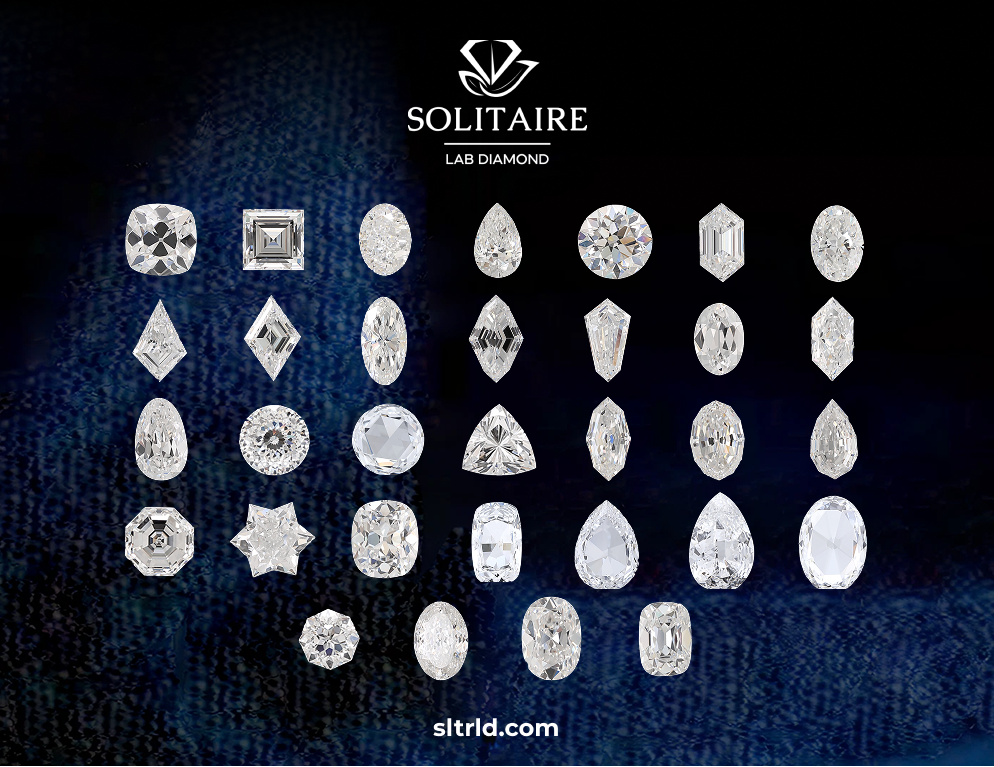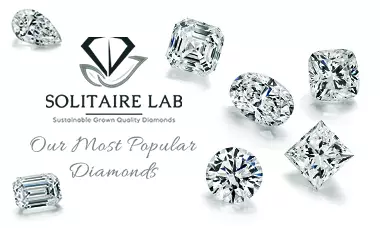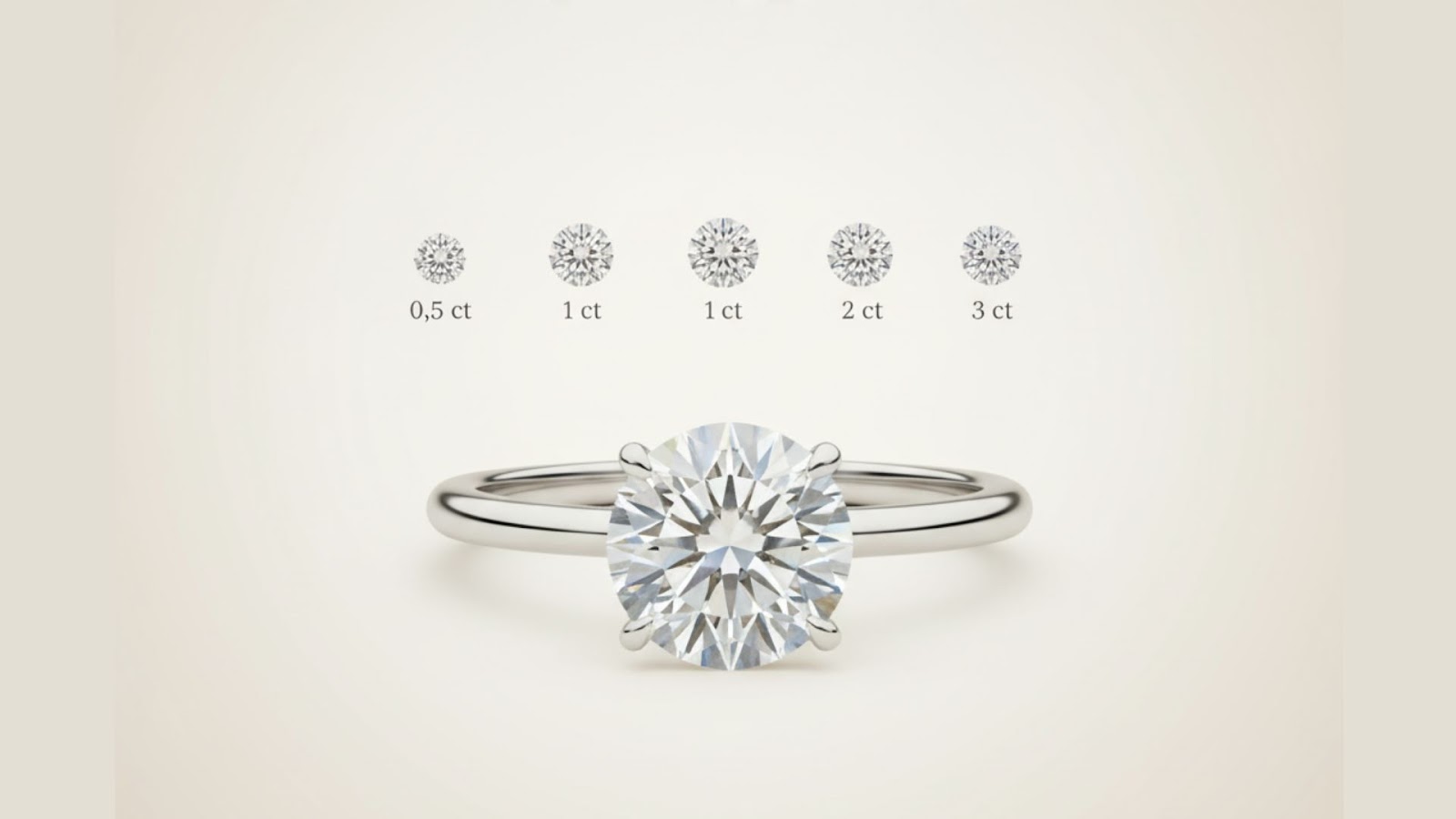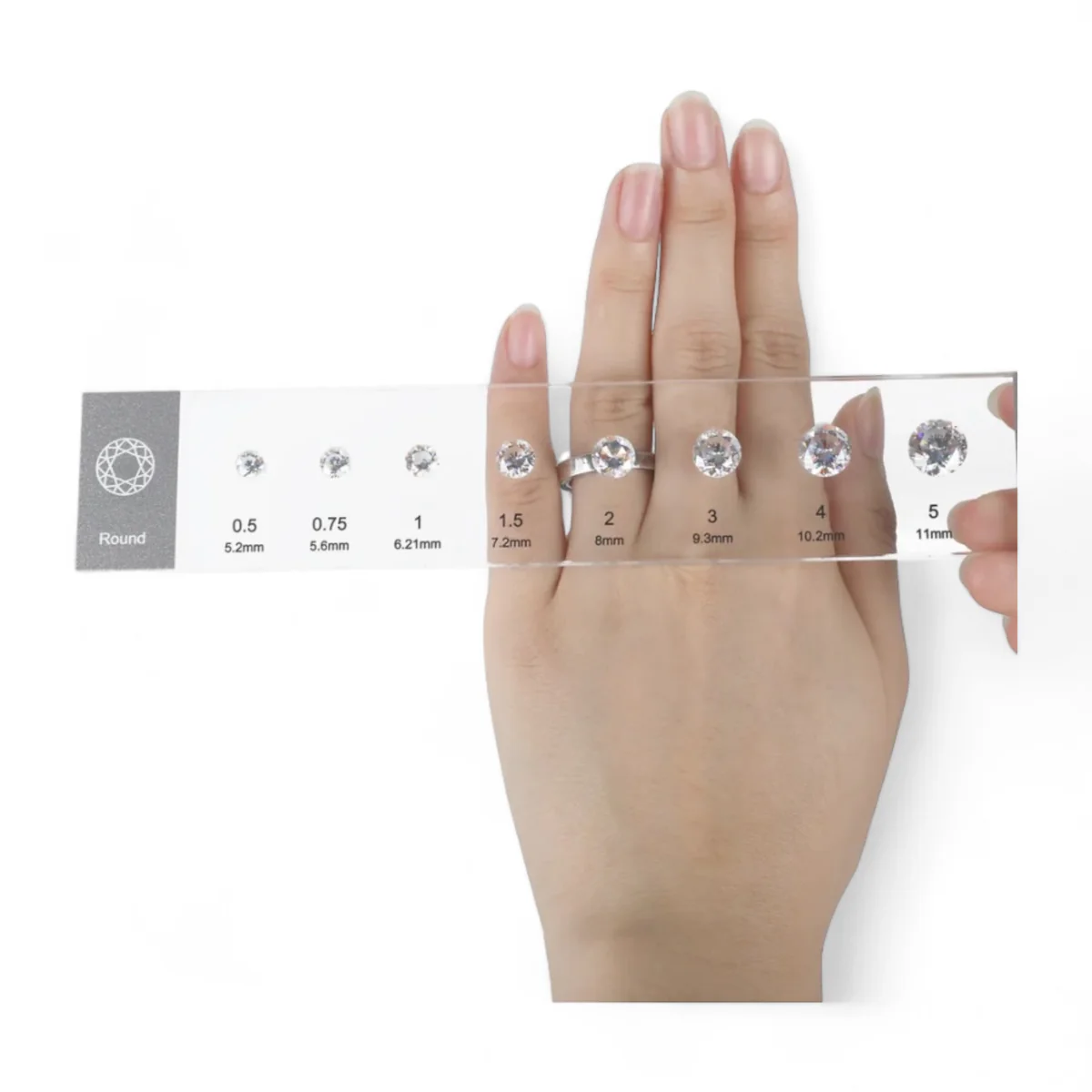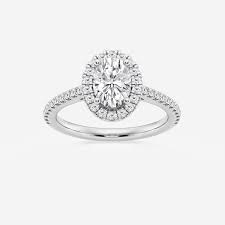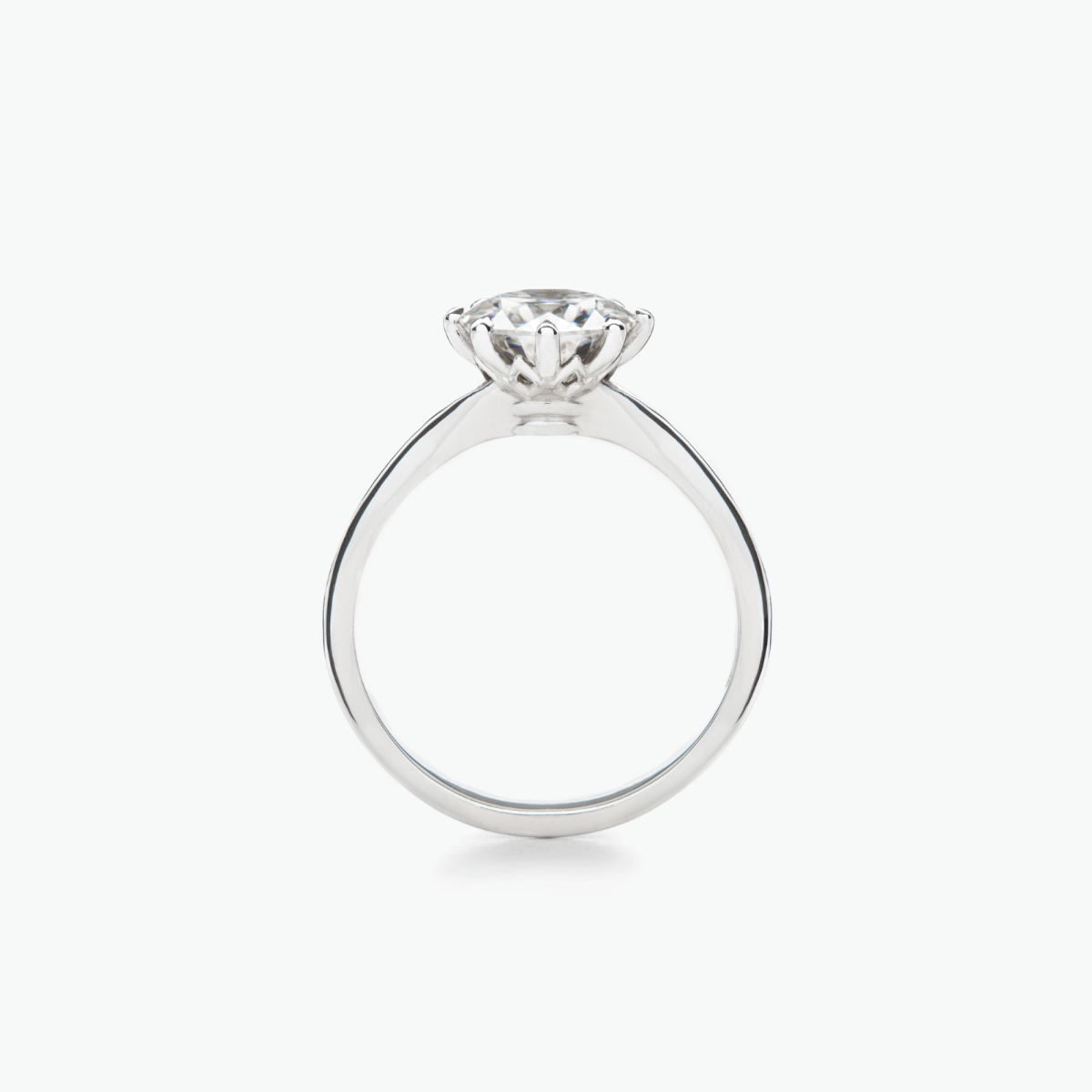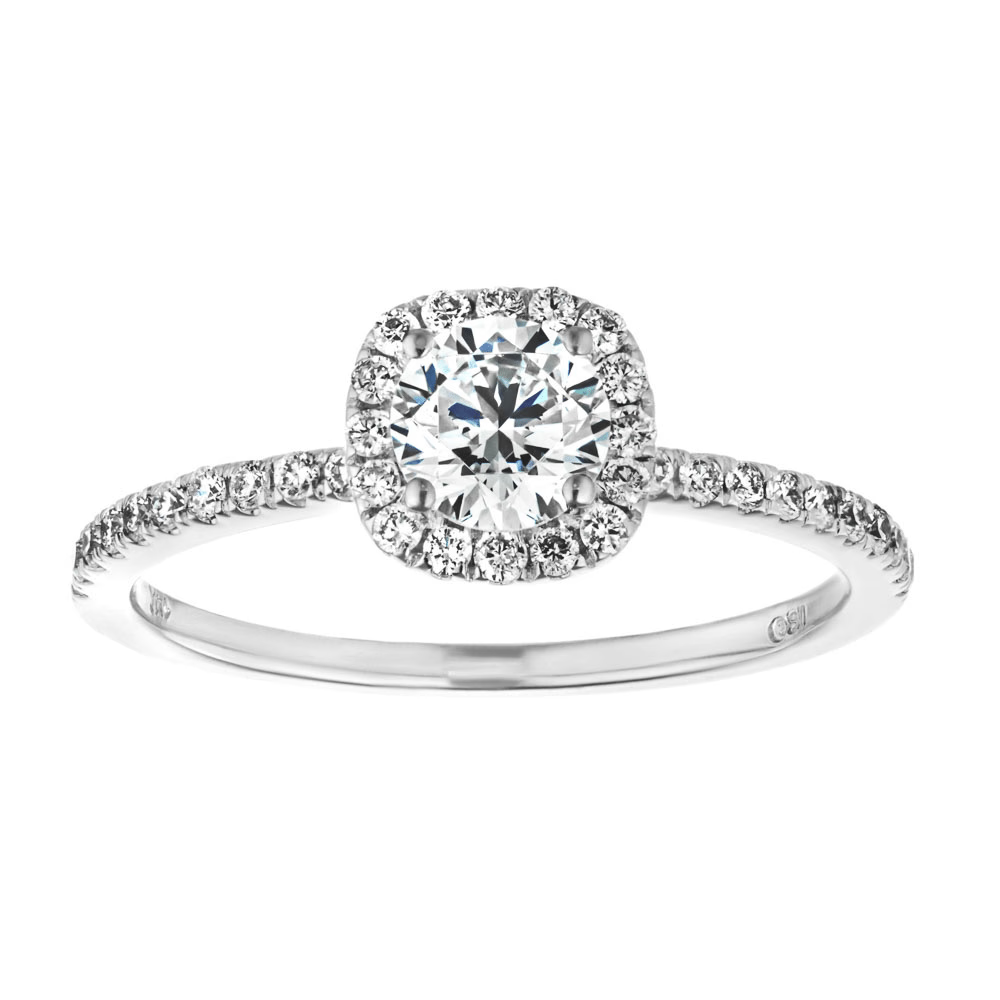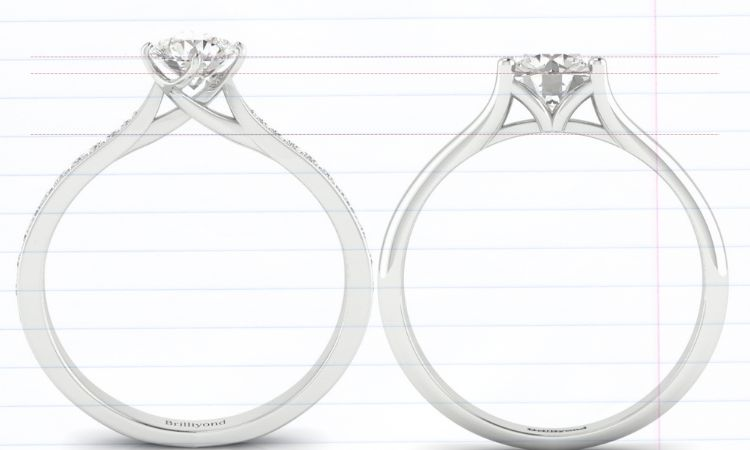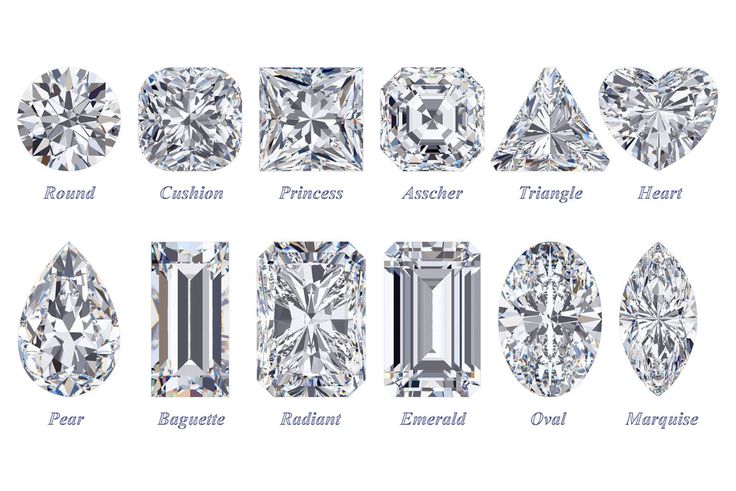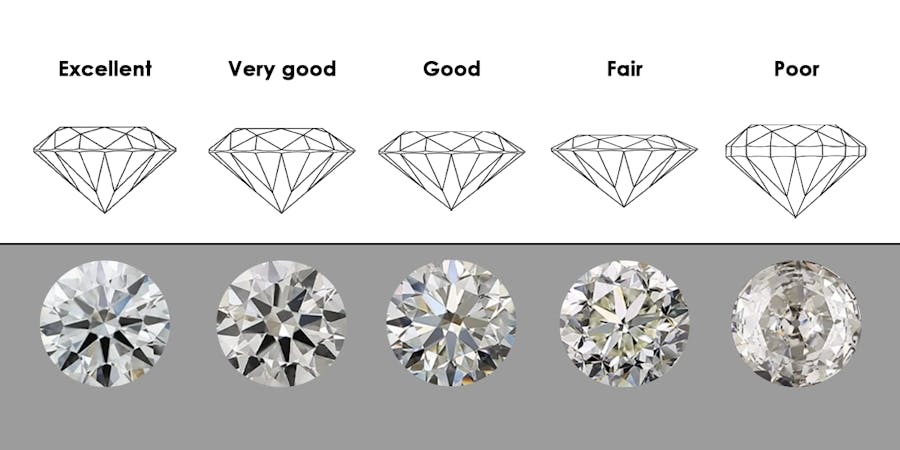Choosing the right diamond can feel confusing, especially when it comes to understanding diamond size and carat. Carat measures the weight of a diamond, but it does not always show how big the diamond will look.
Many people wonder how carat affects both the size and the price of a diamond. Whether you are buying an engagement ring or any other diamond jewellery, knowing the relationship between diamond size and carat will help you make a confident choice.
In this guide, we will explain what diamond size and carat really mean, how they affect appearance and cost, and tips for choosing a diamond that looks perfect on your hand.
What Is Diamond Carat?
Carat is a unit of measurement used to describe a diamond’s weight. One carat is equivalent to 0.2 grams, or 200 milligrams. It is one of the key factors, along with cut, color, and clarity, that determines a diamond’s value and price.
While carat is often associated with size, it technically refers to weight, not the visual dimensions of the diamond.
Understanding what a carat is will help you see why precise measurement is so important, which brings us to how diamond carat is actually measured.
How Diamond Carat Is Measured?
Diamonds are measured with highly precise digital scales that can detect minute differences in weight. Each carat is further divided into 100 points, so a 0.75-carat diamond is 75 points.
Professional gemologists use these scales to ensure exact measurements, which directly influence pricing, especially for diamonds near popular carat milestones like 0.50 ct, 1.00 ct, or 2.00 ct.
Knowing the weight is essential, but many people wonder how this translates into the diamond’s actual size.
Let’s explore how big a carat really is.
How Big Is a Carat?
A carat is a measure of weight, not size, so two diamonds with the same carat can look different depending on their cut. For example, a well-cut round diamond will appear slightly smaller face-up than a flatter, shallow-cut diamond of the same carat.
A 1-carat round diamond is usually about 6.4–6.5 mm wide, while a 0.5-carat round diamond is around 5 mm wide.
This distinction between weight and visual appearance leads to an important question is Does carat really determine the size of a diamond?
Let’s clarify this next.
Carat Weight vs. Carat Size: Is Carat the Size of the Diamond?
It is important to understand that carat weight is not the same as the size or diameter of a diamond. Carat only measures how much the diamond weighs. The apparent size depends on other factors like cut, shape, and proportions.
For instance, an oval or marquise diamond of 1 carat often looks larger than a round diamond of the same weight because its elongated shape covers more surface area.
To make it even easier to visualize how carat weight translates to actual diamond size, the following diamond carat chart shows approximate dimensions for popular carat weights and shapes.
Diamond Carat Size Chart
Understanding how carat weight translates to actual dimensions helps you visualize what to expect. Here is a quick reference chart for round brilliant diamonds (for a comprehensive guide on all diamond shapes, check out our Diamond Shapes Chart):
Different diamond shapes can appear larger or smaller than round diamonds of the same carat weight. For example, oval, marquise, or emerald-cut diamonds often look larger because these shapes have greater surface area.
To understand the visual differences between popular shapes, such as princess cut and cushion cut diamonds, explore our detailed comparison guide.
Numbers and charts show size, but seeing a diamond on your hand reveals its true look.
How Does Diamond Size Look in Real Life?
Viewing diamond size and carat details on paper is one thing, but understanding how a diamond actually looks on a hand provides a realistic perspective.
- Finger Size Matters: The same diamond will look different on different finger sizes. A 0.5-carat diamond may look bigger on a petite finger (size 4-5) but more modest on a larger finger (size 8-9). However, a 2-carat diamond might be too large for a small hand, which may look beautiful on a bigger hand.
- Ring Setting Impact: The mounting style significantly impacts how large a diamond appears. Halo settings can make a center stone look up to half a carat larger by surrounding it with smaller accent diamonds. Bezel settings make diamonds appear larger by encircling them with metal. A classic solitaire setting showcases the diamond's true size without embellishment.
- Shape Affects size: Different shapes create different visual impressions. Elongated shapes like oval, marquise, and pear create a lengthening effect on the finger, often making the diamond appear larger than its carat weight suggests.
For example, a 0.5-carat round diamond might look bigger on a size 4 finger as it covers more of the finger. However, the same carat ring will look smaller and more delicate on a size 8 finger.
This demonstrates why trying on different sizes in person or using virtual try-on tools is so valuable.
Whether you are considering lab-grown vs natural diamonds, understanding these pricing dynamics helps you make informed decisions.
If you want to avoid the hefty cost of a larger diamond, here are some tips to make your diamond look bigger and shine even more.
How to Make a Diamond Look Bigger in Size?
If you want to maximize the perceived diamond size and carat impact without stretching your budget, several strategic choices can help:
Step 1: Choose Size-Enhancing Settings:
1. Halo Settings: Adding small diamonds around the main diamond makes it look bigger.
2. Bezel Settings: A thin metal edge around the diamond can make it appear larger.
3. Thin Bands: A slim ring band makes the center diamond look bigger and creates the illusion of a large diamond.
4. Elevated Prongs: Positioning the diamond higher allows it to sparkle more and seem bigger than it actually is.
Step 2: Select Shapes That Appear Larger
Here are some popular diamond shapes that naturally appear larger on the finger:
- Oval: Typically looks 10% larger than round diamonds of the same carat
- Emerald Cut: Creates a dramatic, substantial appearance
- Marquise: Creates maximum finger coverage
- Pear: Combines size impact with an elegant silhouette
Learn more about how different shapes compare in our comprehensive diamond shapes chart.
Step 3: Balance Carat with Cut Quality:
It is tempting to go for a bigger carat, but sparkle is what truly makes a diamond stand out. A well-cut diamond shines brighter and even looks larger to the eye. When possible, choose an "Excellent" or "Ideal" cut for the best balance of beauty and size.
These tips make a diamond look bigger, but watch out for these common mistakes when selecting the size and carat of a diamond.
Common Mistakes to Avoid When Choosing Diamond Size
Here are a few mistakes to avoid while choosing diamond size:
#1: Choosing Carat Over Cut
Many people focus only on carat size and ignore cut quality. But a 0.90-carat diamond with an Excellent cut will look more beautiful than a 1.00-carat diamond with a Poor cut.
#2: Not Checking Size on the Hand
Looking at numbers alone can be misleading. Always try to see how the diamond looks on a hand, either in person or with online visualization tools.
#3: Overlooking Proportions
If a diamond is cut too deeply, much of its weight sits at the bottom, where you can’t see it. This makes the diamond look smaller from the top. Check proportions like depth and table for the best look.
#4: Skipping Online Tools
When shopping online, use tools like size comparisons, videos, and high-quality images. Also, make sure the seller provides certification and a clear return policy.
Keeping these mistakes in mind will help you pick a diamond that looks beautiful and matches your style, because size isn’t everything. Focusing on cut, proportions, and the right setting ensures your diamond looks stunning and sparkles beautifully, no matter the carat.
Finding Your Perfect Diamond Size and Carat
Understanding the relationship between diamond size and carat empowers you to make informed, confident decisions. Remember that carat measures weight, not dimensions, and that visible size depends on cut quality, diamond shape, setting style, and finger proportions.
At Solitaire Lab Diamond, we offer over 2,500 certified lab-grown diamonds in exclusive styles. Our diamonds offer the same brilliance and durability as natural diamonds while providing exceptional value and ethical sourcing.
Every diamond meets rigorous standards for cut, color, clarity, and carat weight, ensuring lasting beauty for generations.
Whether you are selecting an engagement ring, anniversary gift, or timeless piece, choosing lab-grown diamonds means celebrating life's special moments responsibly.
Ready to find your perfect diamond?
Contact Solitaire Lab Diamond and understand how the right diamond size and carat can beautifully capture your unique story while supporting sustainable practices.
